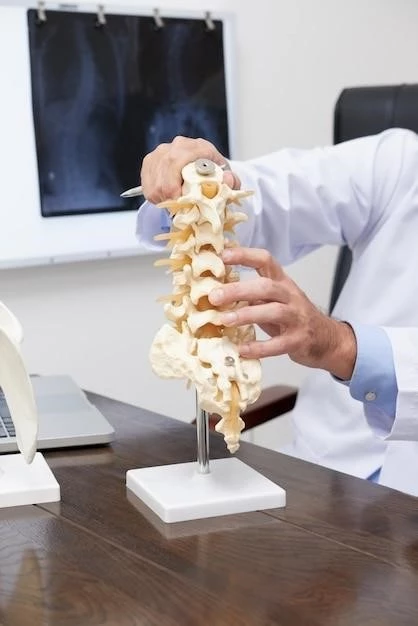Article Plan⁚ Disease ‒ Spinal and Bulbar Muscular Atrophy
The Internet provides valuable information on spinal and bulbar muscular atrophy (SBMA), a rare neuromuscular disorder affecting men. Explore the causes, diagnosis, and treatment options for managing the muscle weakness, atrophy, and other symptoms associated with SBMA. Stay informed and seek medical advice for personalized care.
Introduction to Spinal and Bulbar Muscular Atrophy
Spinal and bulbar muscular atrophy (SBMA), also known as Kennedy’s disease, is a rare neuromuscular disorder that primarily affects men. This condition is linked to genetic mutations passed down from parents resulting in symptoms such as muscle weakness, atrophy, and twitching. Understanding the genetic background and clinical presentation of SBMA can help individuals navigate diagnosis and treatment options. Stay informed about the disease progression, impact on muscle function, and advancements in research to enhance management strategies and quality of life for those affected by SBMA.
Understanding the Genetic Background
Spinal and Bulbar Muscular Atrophy (SBMA), also known as Kennedy’s disease, is an X-linked recessive disorder caused by CAG repeat expansions in the androgen receptor gene. These genetic abnormalities lead to a toxic gain of function, affecting muscle and motor neuron degeneration. Understanding the underlying genetic mechanisms is essential for diagnosis, management, and potential future therapeutic developments. Genetic counseling can provide valuable insights for affected individuals and their families regarding the hereditary nature of SBMA.
Clinical Presentation and Symptoms
Spinal and bulbar muscular atrophy (SBMA), also known as Kennedy’s disease, presents with symptoms like muscle weakness, atrophy, and fasciculations, particularly affecting the limbs and bulbar region. Individuals may experience gynecomastia, testicular atrophy, and androgen insensitivity. Understanding the clinical manifestations and early signs of SBMA is crucial for timely diagnosis and appropriate management strategies to address the varying symptoms associated with this rare neuromuscular disorder.
Diagnosis and Laboratory Testing
Diagnosing spinal and bulbar muscular atrophy (SBMA) involves comprehensive clinical evaluation, genetic testing to identify CAG repeat expansions in the androgen receptor gene, and laboratory assessments like creatine kinase levels. These tests help confirm the diagnosis and distinguish SBMA from other neuromuscular conditions. Seeking evaluation by healthcare professionals experienced in neuromuscular disorders is essential for accurate diagnosis and personalized treatment planning.
Disease Progression and Prognosis
Spinal and bulbar muscular atrophy (SBMA) is a rare neuromuscular disorder characterized by a gradual progression of muscle weakness, atrophy, and motor dysfunction. The prognosis for individuals with SBMA can vary based on factors such as age of onset, severity of symptoms, and individual response to treatment. Understanding the disease progression and potential outcomes can assist in developing personalized management strategies and improving the quality of life for those living with SBMA. Stay informed about the latest research and therapeutic approaches to optimize care and prognosis for individuals affected by SBMA.
Treatment Options and Management Strategies

For individuals diagnosed with spinal and bulbar muscular atrophy (SBMA), exploring treatment options and management strategies is crucial. From physical therapy to assist with muscle strength and mobility to potential pharmacological interventions targeting specific symptoms, a comprehensive care plan can be tailored to individual needs. Consult with healthcare providers specializing in neuromuscular disorders to discuss personalized approaches for symptom management, supportive care, and lifestyle modifications to optimize quality of life while living with SBMA. Stay informed about the latest advancements and emerging therapies in SBMA management to make well-informed decisions regarding treatment options.
Research and Developments in SBMA
Stay informed about the latest research and developments in Spinal and Bulbar Muscular Atrophy (SBMA); Explore advancements in understanding the genetic basis of SBMA, potential therapeutic targets, and ongoing clinical trials. Keeping up-to-date with emerging findings can provide valuable insights into the pathogenesis of SBMA and offer hope for future treatment options. Consult with healthcare professionals knowledgeable about the latest research to stay informed and engaged in the SBMA community.
Impact on Muscle Function and Energy Metabolism
Spinal and bulbar muscular atrophy (SBMA) affects muscle function and energy metabolism, leading to muscle weakness, atrophy, and altered metabolic processes in both the spinal cord and skeletal muscle. Understanding the impact of SBMA on muscle function and energy metabolism is essential for developing targeted therapeutic approaches to address the underlying mechanisms contributing to the progression of this neuromuscular disorder. Stay informed about advancements in research focusing on muscle energy metabolism in SBMA to enhance management strategies and improve outcomes for individuals living with this condition.
Role of Androgen Receptor Gene in SBMA
Spinal and bulbar muscular atrophy (SBMA), also known as Kennedy’s disease, is tied to the CAG repeat expansions in the androgen receptor gene. These genetic anomalies lead to a toxic gain of function, influencing muscle and motor neuron degeneration. Understanding the significance and implications of the androgen receptor gene in SBMA is fundamental in grasping the disease’s pathophysiology and potential therapeutic targets. Stay informed about the latest research and advancements in this area to enhance your understanding of SBMA and its genetic underpinnings.
Unique Features of SBMA Compared to Other Motor Neuron Diseases
Spinal and bulbar muscular atrophy (SBMA), also known as Kennedy’s disease, presents unique features compared to other motor neuron diseases. This X-linked neuromuscular disorder primarily affects men and is caused by trinucleotide CAG repeat expansions in the androgen receptor gene. Understanding how SBMA differs from other conditions such as amyotrophic lateral sclerosis (ALS) or spinal muscular atrophy (SMA) can assist healthcare providers in diagnosing and managing the disease effectively. Stay informed about the distinct characteristics and manifestations of SBMA to streamline treatment strategies and support individuals living with this rare disorder.
Clinical Trials and Investigational Treatments
Stay informed about the ongoing clinical trials and investigational treatments for individuals with spinal and bulbar muscular atrophy (SBMA). Clinical trials are essential for evaluating the safety and efficacy of potential therapies, including emerging pharmacological interventions, gene therapies, and multidisciplinary approaches. Participating in clinical trials can provide access to novel treatments and contribute to advancing the understanding of SBMA. Consult with healthcare professionals to explore opportunities for involvement in clinical research and investigational treatments tailored to your specific needs.
Management of Symptoms Related to Bulbar Dysfunction
Effective management of symptoms related to bulbar dysfunction in spinal and bulbar muscular atrophy (SBMA) is essential for improving quality of life. Symptoms such as difficulty swallowing, speech impairment, and respiratory issues require a multidisciplinary approach. Speech therapy, dietary modifications, respiratory support, and assistive devices can help address bulbar dysfunction symptoms in individuals with SBMA. Collaborating with healthcare professionals experienced in neuromuscular disorders can guide personalized strategies to manage bulbar dysfunction and enhance overall well-being.
Importance of Genetic Counseling for Families
Genetic counseling plays a crucial role for families affected by spinal and bulbar muscular atrophy (SBMA). As SBMA is an X-linked genetic disorder, understanding the hereditary aspects and potential implications for family members is essential. Genetic counseling can provide families with information about inheritance patterns, risk assessment, and available testing options. Empowering families with knowledge about SBMA can help them make informed decisions about genetic testing, family planning, and supportive care for affected individuals.
Supportive Care and Quality of Life Considerations

Providing supportive care is vital for enhancing the quality of life of individuals with spinal and bulbar muscular atrophy (SBMA). Implementing strategies such as physical therapy, assistive devices, speech therapy, and respiratory support can help manage symptoms and improve daily functioning; Addressing emotional and social well-being, ensuring nutritional support, and promoting a multidisciplinary approach to care can positively impact the overall quality of life for those navigating the challenges of living with SBMA. Stay engaged with healthcare providers to optimize supportive care strategies tailored to individual needs.
Promising Therapeutic Approaches and Future Directions
Stay informed about the promising therapeutic approaches and future directions in the management of spinal and bulbar muscular atrophy (SBMA). Research is ongoing to explore novel treatment strategies, including potential gene therapies, targeted interventions, and multidisciplinary care approaches to improve outcomes for individuals with SBMA. Keeping abreast of the latest developments and advancements can offer hope for enhanced symptom management and quality of life enhancements. Consult with healthcare professionals to discuss potential therapeutic avenues and future directions in SBMA care.
